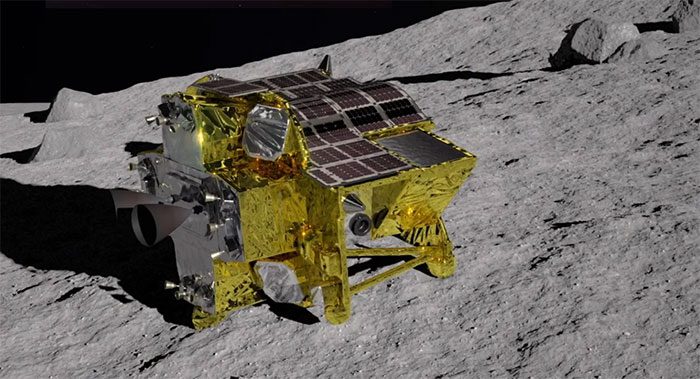On April 1, the Japan Aerospace Exploration Agency (JAXA) announced that its Smart Lander for Investigating Moon (SLIM) has once again “fallen asleep” after achieving a remarkable milestone: surviving its second extremely cold lunar night.

JAXA’s Slim probe. (Image: Internet).
JAXA stated: “During this period, we will focus on checking the status of some equipment by turning on switches and testing payloads. Although there are some malfunctions with certain functions of the multi-spectral camera, this device is still operational; thus, we are thoroughly checking its condition.”
The SLIM lander touched down on the Moon in January, marking Japan as the fifth country in the world to achieve a gentle soft landing on Earth’s only natural satellite, following the former Soviet Union, the United States, China, and India.
The SLIM spacecraft landed at an angle that caused its solar panels to be misaligned, preventing optimal energy collection. However, defying pessimistic predictions, this 200 kg probe achieved a remarkable feat: reviving twice after experiencing lunar night temperatures of -183 degrees Celsius and -130 degrees Celsius, respectively. A lunar night lasts about 14 Earth days. Previously, JAXA indicated that SLIM was not designed for such harsh lunar nights.
So far, SLIM has met the basic objectives of its mission, including precise landing, deploying two small rovers, conducting a series of scientific experiments, and transmitting images from the Moon back to Earth.
JAXA reported that SLIM’s multi-spectral camera is searching for a mineral named Olivine on the Moon’s surface, with the intention of analyzing the composition of this mineral. Comparing this mineral to samples found on Earth will provide evidence for the hypothesis of a major collision (Big Bang), suggesting that the Moon was formed from a collision between Earth and another planet around 4.6 billion years ago.


















































